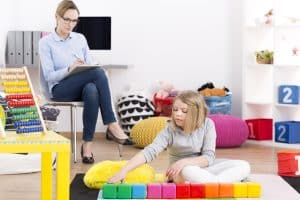Applied Behavior Analysis (ABA) therapy is a verified and valuable technique for assisting individuals with autism spectrum disorder (ASD) in building significant skills and improving behavior. As practiced professionals usually carry out ABA therapy, it implements some set of techniques at the home premises, as it can also assist your child with ASD to improve and progress. In this piece of writing, I will help you discover the itsy bitsy details of ABA therapy, and you can implement it at home:
Creating Structured Surroundings is a Key
Launch an everyday schedule with steady routines because this supports children with ASD to feel protected and confident.
Visual aids are highly-beneficial; for this, you can create a visual schedule to assist your child in giving them a clue about what comes next, which will decrease his anxiety level.
Your Child Needs a Token of Appreciation
Positive reinforcement comes with approval, appreciation, encouragement, and a little reward to bring your child the desired change.
Friendly gestures like high-fives or verbal praise like Wow, bravo will enable your child to get on positive behavior.
Divide the Tasks Into Manageable Components
For individuals with ASD, assign them tasks in chunks as it will be more manageable for them. Instructions should be delivered unambiguously, keeping things easy and simple for them. A little sign of appreciation will fuel their energy, so practice an encouraging approach throughout the process.
A Guide Through Visual Prompts
Visual prompts in the form of pictures and cards will be helpful for better learning; assign engaging yet easy activities and tasks to them by guiding them with visual prompts,
Execute Discrete Trial Training (DTT)
DTT is a teaching practice generally used in ABA therapy; with the help of this method, individuals are taught skills in a structured and repetitive manner.
Prolonged lessons are avoided, and short lessons with simple instructions are taught so the individuals can respond conveniently.
Teach Self-Improvement Skills
Give special attention to infusing significant self-improving and self-help skills, such as eating on their own, dressing, and personal cleanliness.
Make them learn these skills in small steps, significantly improving them.
Encourage Healthy Communication
Communication in any way will be beneficial for persons with ASD; though it won’t be easy yet, try doing so through pictures, sign language, or do it verbally.
Using simple language, you can encourage them to speak by asking questions.
Attract with Social Stories
Social stories are a great relate, as the story’s narration teaches connectivity. There are so many social situations that an individual can come across.
You can craft social stories for different scenarios; this will be an excellent tool for promoting social skills.
Cultivate Playful Activities and Leisure Skills
Getting an individual involved in playful activities is fruitful; it is beneficial for progressing and learning. You may stimulate your dear to involve in age-appropriate activities.
Accompany them in play to assist social interactions.
Practice Persistence
Be wise enough to understand that progression is a time-consuming process; encountering setbacks is normal, so you must be patient.
Rejoice, celebrate small achievements, and express generously that you are there for them.
Supervise and Trace Progress
Monitoring the execution of strategies and the progression you perceive is crucial. Supervise the entire process closely.
It will enable you to spot the weak areas; according to them, you can take the required measures.
Conclusion
Implementing ABA therapy strategies at home can considerably contribute to the progress and development of individuals with autism spectrum disorder. For this, you need to craft a structured environment, use positive reinforcement, and make things easier for them by dividing the tasks into chunks and using visual prompts; you can substantially sustain their learning process.









